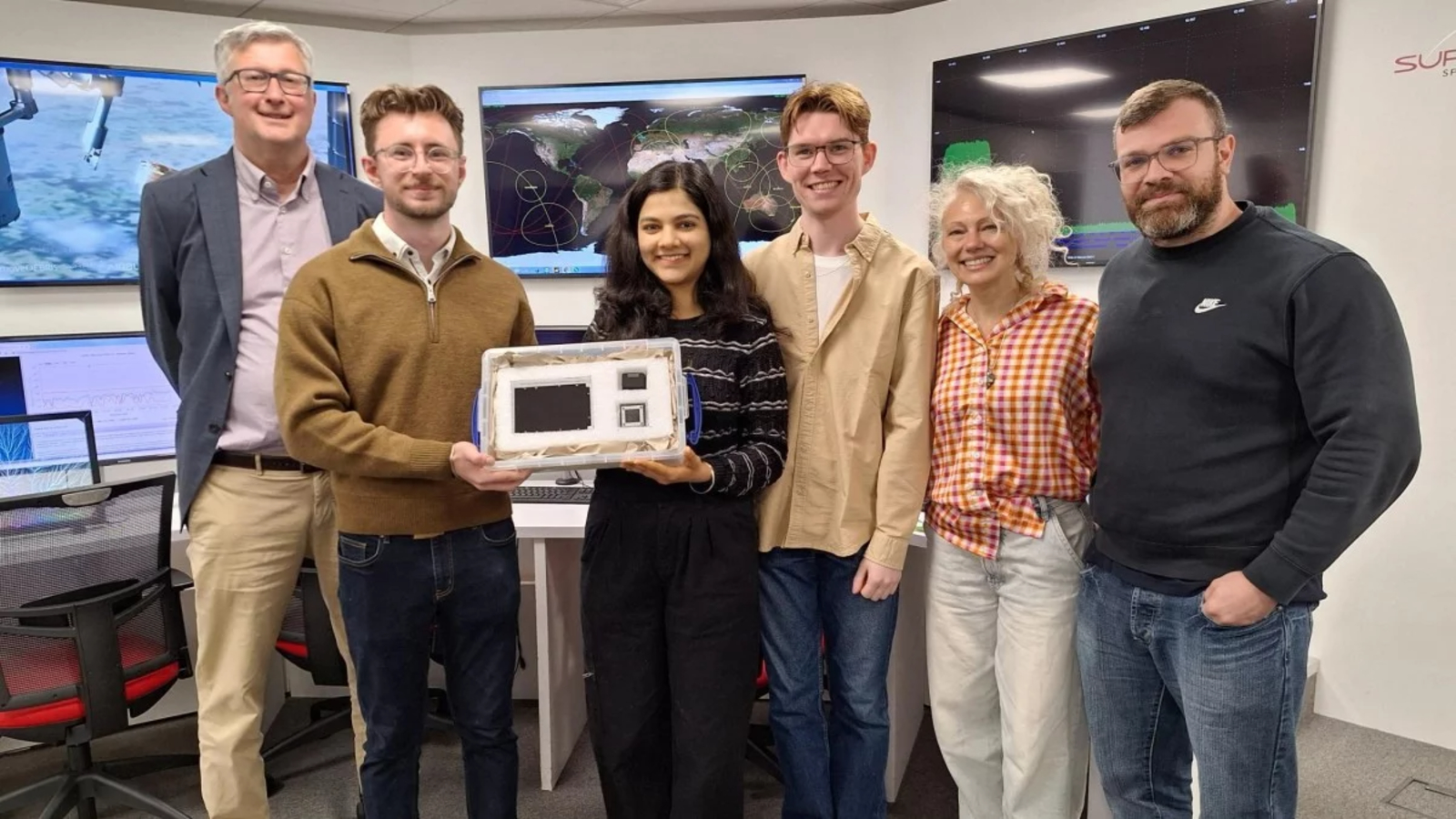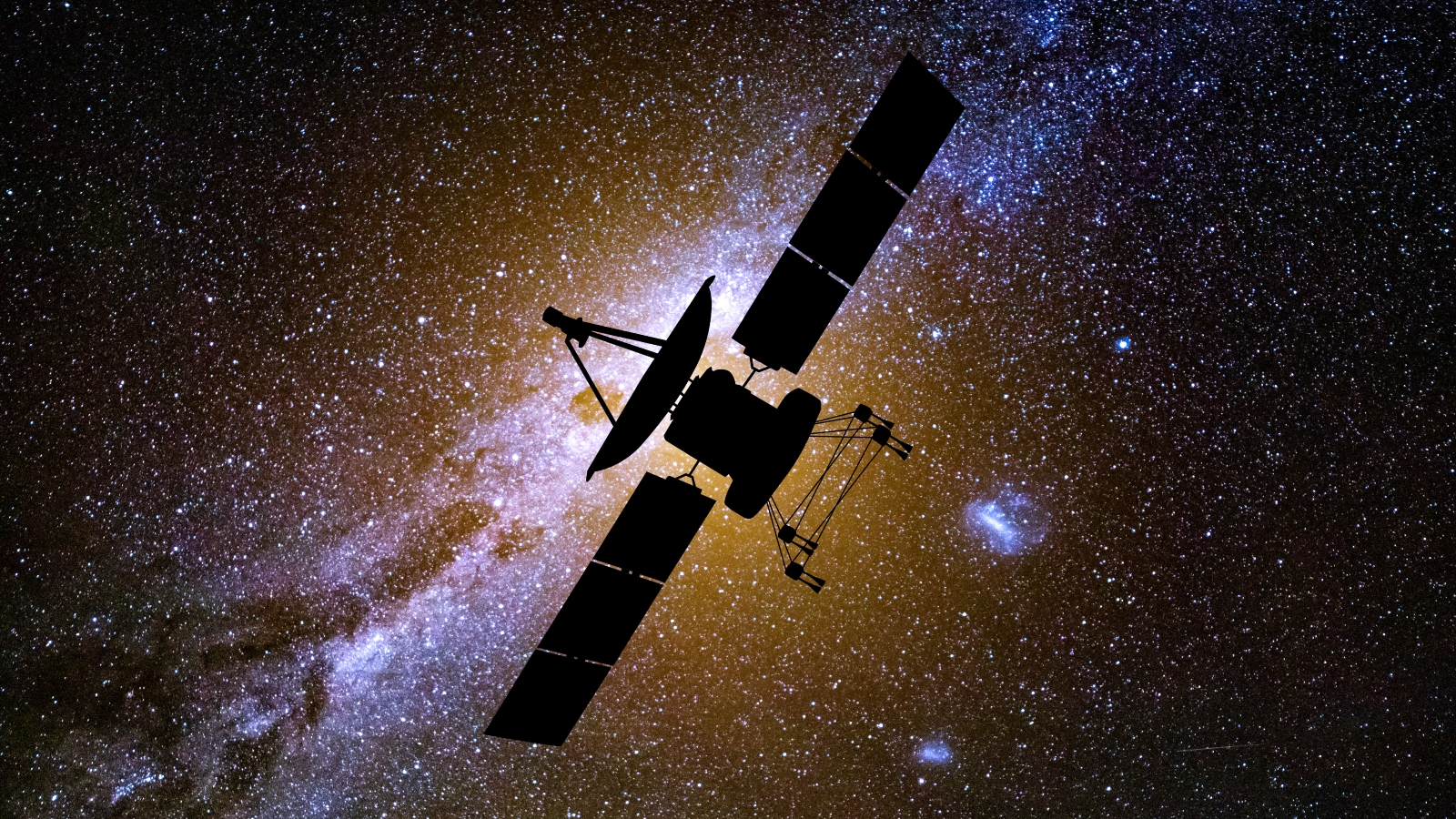A satellite painted with one of the darkest materials ever created by humans, known as “Vantablack,” will launch into space next year to help researchers try and solve a major issue that’s plaguing astronomers across the globe.
There are more than 14,900 satellites orbiting Earth. But experts predict that, within the next 50 years or so, the number of active spacecraft in low Earth orbit (LEO) could rise to more than 100,000. This sharp rise is thanks to private satellite “megaconstellations,” such as SpaceX’s Starlink network, which already accounts for more than 60% of the total number of spacecraft circling our planet. These machines are causing several problems that scientists are only just starting to properly understand, including uncontrolled reentries, radio signal interference — and light pollution.
For several years, astronomers have been warning that sunlight reflecting off shiny metal satellite swarms will brighten the night sky, making it harder to study the cosmos. This issue is already impacting most optical observatories, which are getting repeatedly photobombed by satellites flying overhead. And the situation is expected to get worse due to newer spacecraft, such as China’s “Thousand Sails” satellites, that far exceed the brightness limits suggested by astronomical authorities.
One potential solution to this problem is to make satellites that do not reflect light. Therefore, researchers in the U.K. will soon launch a “shoebox-size” cubesat, named Jovian-1, which will have one side covered in a special “hull-darkening” material that absorbs 99.965% of light that hits it. By closely tracking the dark-coated spacecraft as it orbits our planet, the team will be able to tell if the material works as predicted — and whether it can withstand the rigors of space travel.
The mini-satellite is scheduled to launch at some point in 2026. The project is being managed by the Joint Universities Programme for In-Orbit Training, Education and Research (JUPITER), a collaboration between the Universities of Surrey, Portsmouth and Southampton in the U.K..
Related: What goes up must come down: How megaconstellations like SpaceX’s Starlink network pose a grave safety threat to us on Earth
The hull-darkening material is a version of Vantablack, a substrate covered with vertical carbon nanotubes that absorb almost all the light waves that hit it from nearly every angle. It is often described as the blackest material on Earth, although this has been disputed by competitors in recent years.
The new version, named Vantablack 310, is modified to withstand the harsh conditions of space, such as extreme fluctuations in temperature and bombardment by cosmic radiation. It was created by Surrey NanoSystems — a spinoff company from the University of Surrey that first created Vantablack in 2014.
“Our latest coating technology, Vantablack 310, offers super-black performance across a wide range of viewing angles, while remaining robust to the challenging LEO environment,” Kieran Clifford, a senior technologist and project lead at Surrey NanoSystems, said in a statement, adding that the goal was to ensure””sustainable and equitable access to a night sky for all.”

More problems to solve
While hull-darkening could provide a potential solution to the light pollution issue, there are still several other megaconstellation issues that need to be solved.
For example, even if a satellite does not give off light pollution, it would still emit radio pollution. Astronomers recently warned that this could lead to an “inflection point,” beyond which ground-based radio astronomy would become effectively impossible.
The rising number of satellites also increases the chances of spacecraft colliding with one another, further contributing to the amount of space junk that is littered across LEO, which can in turn increase the chances of even more collisions.
Additionally, private satellites have a short lifespan and most eventually fall back to Earth and burn up in our planet’s atmosphere, releasing metal pollution into our skies that we are still trying to fully understand.
